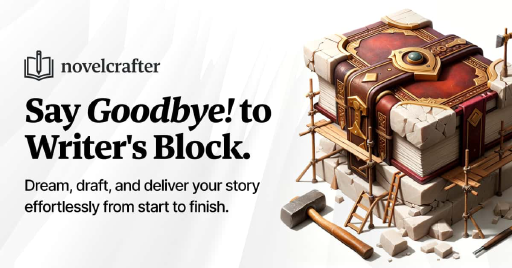Getting Started with Fiction Writing
Embracing Your Creativity
Dipping your toes into fiction? Time to let your creativity run wild. Every tale starts with a spark—your spark. Let your mind wander and dream up those wild ideas. Here are some tricks to get those creative juices flowing:
| Technique | What to Do |
|---|---|
| Freewriting | Just write. No worry about grammar or structure. Let it spill out. |
| Brainstorming | Jot down whatever pops in your head. Don’t sweat the weird stuff. Connections will come. |
| Mind Mapping | Draw out your ideas. Link up themes, characters, plot—you’ll see the story unfold. |
Dabble with these writing exercises to find your voice. Check out our creative writing exercises for more fun ideas.
Overcoming Writer’s Block
Even the pros hit a wall sometimes. No sweat, here’s how to bust through:
| Approach | How It Helps |
|---|---|
| Change Your Environment | Give your routine the boot. A new spot might inspire fresh ideas. |
| Set Small Goals | Don’t aim for the stars right away. A paragraph? A page? Celebrate that. |
| Take Breaks | Step back a sec. Relax with something you like. Refuel that brain. |
Stuck tight? Our guide on overcoming writer’s block might just do the trick.
By setting creativity free and beating down writer’s block, you’re on the way to spinning tales that’ll grab folks’ attention. Keep digging into writing tips and watch your confidence grow.
Understanding the Basics
If you’re dabbling in fiction writing or diving in headfirst, nailing down the basics is where it all begins. This bit here will hit on the nuts and bolts of a fiction story and how you can create characters that feel real enough to call up for a chat.
Elements of a Fiction Story
Alright, so your well-built fiction tale has gotta have these core parts. Here’s a quick rundown:
| Element | Description |
|---|---|
| Setting | When and where everything goes down. |
| Characters | The folks pulling the strings and sharing the message. |
| Plot | The rollercoaster of happenings shaping your yarn. |
| Conflict | The hurdles your characters gotta deal with. |
| Theme | What’s the big idea or takeaway? |
| Point of View | Who’s giving you the scoop? |
Get cozy with these ideas, and you’ll have a story that grabs folks by the collar. Curious about fleshing out your tale? Peek at our how-to on outlining a story.
Developing Characters
To keep folks hooked, your characters need to pop off the page. Keep these tidbits in mind:
- Backstory: Know their history. It makes them as complex as folks you know.
- Motivation: What gets them out of bed? It shapes every choice they make.
- Flaws: Because perfect is boring. Toss in a quirk or two.
- Growth: Let ’em change. Evolution’s not just for the birds.
For more guidance, take a gander at our piece on realistic characters or grab a peek at tricks for memorable characters.
 What Poetry Feels Like
What Poetry Feels LikeBy mastering these key elements and breathing life into your characters, your stories will stick with folks long after they turn the last page. To brush up on your craft, dive into creative writing exercises or snag some beginner writing tips.
Creating Your Narrative
Putting together your story is a big step in writing fiction. It means setting up the scene and mapping out the plot to pull your readers right into your world.
Setting the Scene
The setting is your story’s stage, giving readers a sense of place and time. A vivid setup pulls them in and gives your characters and plot a home.
Here’s what to think about when setting up your story:
- Time Period: When’s it happening? This shapes your story, your characters, even how they talk.
- Location: Where’s your story set? Is it in a busy city, a sleepy little town, or somewhere from your imagination?
- Mood: Use words that make folks feel. Set the tone, be it playful, gloomy, or full of adventure.
- Culture: What are the social, cultural, and money matters affecting your characters’ lives?
| Aspect | What to Think About |
|---|---|
| Time Period | Now, then, or maybe someday. |
| Location | Real places or made-up spots. |
| Mood | Feelings stirred by your descriptions. |
| Culture | How society shapes actions and norms. |
To see how you can make your settings more believable, check out how to create believable settings.
Plotting Your Story
Plotting brings order to the chaos of your ideas. A well-structured plot keeps readers hooked and your story moving. Here’s how you can do it:
- Start with a Premise: What’s the big idea driving your story? It could be a tough challenge or a goal your hero’s chasing.
- Outline Your Plot: Sketch out the key events. Methods like the three-act structure or plot diagrams can help paint a clearer picture.
- Introduce Conflict: That’s what keeps things interesting. It might be a struggle inside a character or a clash with someone or something.
- Build to a Climax: The high point of your tale, where everything hits the fan.
- Resolve the Story: Wrap things up by solving the conflicts and tying the narrative bow.
| Process Stage | What’s Involved |
|---|---|
| Premise | Main idea or conflict driving the story. |
| Outline | Laying out the story’s framework. |
| Conflict | The core struggle or challenge your story confronts. |
| Climax | The moment of greatest tension, where conflicts hit their peak. |
| Resolution | Wrapping up conflicts and bringing the story to a satisfying end. |
For more advice on plotting, peek at how to outline a story and how to create a compelling plot.
As you craft your narrative, let your creativity roam and let ideas bloom. Your special voice and style will show as you sketch your setting and weave your plot.
Writing Techniques
Want to make your stories pop off the page? These tried-and-true strategies are your ticket. In this bite-sized guide, we’ll explore the awesome duo of “Show, Don’t Tell” and playing up tension and conflict in your tales.
Show, Don’t Tell
Think of “Show, Don’t Tell” like painting with words. Instead of just laying out facts, let your readers see, hear, and feel what’s happening. It’s all about creating a world that leaps out and grabs you by the senses.
Examples
| Telling | Showing |
|---|---|
| She was scared. | Her heart pounded like a drum solo as she cracked open the door with shaky hands. |
| It was a beautiful day. | Sunshine spilled over the park, kids chuckled as their kite tails danced in the bright, blue sky. |
| He was angry. | His face went tomato-red and his fists balled up tight as if ready to punch through a wall. |
Let this method boost your narrative punch! As you sprinkle in descriptive flair, keep sharpening your skills. Dabble in creative writing exercises to polish this technique to perfection.
Building Tension and Conflict
Conflict’s the spice that keeps your readers hooked. Through tension, you weave a tapestry of stakes and hurdles for your characters. As the drama picks up speed, your readers will hang onto every twist till the big finish.
Types of Conflict
| Type of Conflict | Description |
|---|---|
| Internal Conflict | A character wrestling with their own demons like fears or tough choices. |
| External Conflict | Battles against the baddie, society or even nature itself. |
| Interpersonal Conflict | Sparks flying between characters over clashing dreams or beliefs. |
Cranking up tension means crafting a page-turner. Start those conflicts early on, then stir the pot as the story unfolds, leaving your audience dying to find out what happens next. For brewing a killer plot, suss out our plot crafting tips.
By nailing these storytelling techniques, you’ll level-up your writing game. Experiment with different tricks to keep evolving your craft. If you’re on the hunt for more ways to polish your prose, peep our rundown on story writing mastery.
Editing and Revising
Getting your words just right is no small feat. You’ve done the hard part by writing. Now let’s polish your masterpiece with some helpful editing skills. These tweaks can make your work shine.
Self-Editing Tips
Turning a critical eye on your own scribbles isn’t easy, but it’s worth it. Here’s how to tighten up your manuscript:
| Step | Description |
|---|---|
| Take a Break | Kick back and forget about your words for a few days. Coming back with a fresh mindset makes spotting mistakes a breeze. |
| Read Aloud | Sing it out! Okay, maybe not sing, but hearing it can reveal iffy phrases and hiccups in your flow. |
| Consistency Check | Keep your ducks in a row. Make sure names, places, and plot details don’t go off script. |
| Clear the Clutter | Chop out those confusing sentences and cut the fluff. Keep it simple, smarty. |
| Structure Stuff | Give your story a once over. Does it go where it needs to? Make sure the parts fit together like a puzzle. |
| Proof the Stuff | Time to catch those sneaky grammatical goofs and stray commas. Tools and resources can be your trusty sidekicks—peek at our guide on tips for editing your book. |
Seeking Feedback
There’s magic in having others peek at your pages. Fresh eyes can bring a fresh perspective, and a little constructive criticism never hurt anybody (much). Here’s how to get it:
| Method | Description |
|---|---|
| Writing Groups | Find your tribe online or local. Swapping stories and suggestions builds a supportive buzz around your work. |
| Beta Readers | These folks are your first fans, so pick ones that get your vibe. They’ll help you know what’s sticking. |
| Workshops | Join up and show your stuff for some pro pointers. It’s a chance for brutal (but helpful) honesty. |
| Online Critique Spots | The internet’s full of writerly corners where feedback flows free. Find one that matches your genre for the best fit. |
When feedback rolls in, don’t fight it—consider it. You’ll grow as a writer when you listen to new takes, even if they sting a bit. Check out our advice on how to revise your manuscript for more pointers.
Mixing your self-editing magic with outside input can level up your writing game, setting you on track for crafting stories that truly connect.
Continuing Your Writing Journey
Setting Realistic Goals
When you’re diving into fiction writing, it’s crucial to set goals that are doable and keep you pumped up. Setting these targets can make your writing journey smoother and give you that feel-good sense of ‘I did it!’ every now and then. Here’s what you might aim for:
| Goal Type | Example |
|---|---|
| Daily Writing Goals | Write 500 words every day |
| Weekly Milestones | Bash out one chapter a week |
| Monthly Objectives | Wrap up a draft by month’s end |
| Skill Development | Tackle writing prompts twice weekly |
By slicing your big writing dreams into bite-sized chunks, you can keep the train rolling without getting swamped. It helps to jot down your wins and tweak your goals if needed. Curious about sticking with it? Peek at our article on how to develop a writing habit.
Joining Writing Communities
Hanging out with other writers can be a game-changer. Whether online or face-to-face, writing communities offer a mix of pep talks, insights, and new ideas. Some spots to check out:
| Community Type | Description |
|---|---|
| Online Forums | Chat hubs for writers to swap advice (e.g., Reddit, Wattpad) |
| Local Writing Groups | Meet face-to-face for feedback and chats |
| Social Media Communities | Follow authors and jump into groups on Facebook or Twitter |
| Workshops and Classes | Classes with a focus on honing writing skills |
Being part of a writing group means you get constructive criticism, talk shop about writing hacks, and share stories. These chats can be gold for learning and solving hiccups. Swing by our article on writing advice for new authors for tips on making the most of writing communities.
By setting goals that feel right and jumping into writing circles, you’ll boost your skills and stay jazzed about your fiction journey.


 Grab my poetry book, 'we're all just wanderers in the end' Here
Grab my poetry book, 'we're all just wanderers in the end' Here AD: Your Book Finally Written...
AD: Your Book Finally Written...